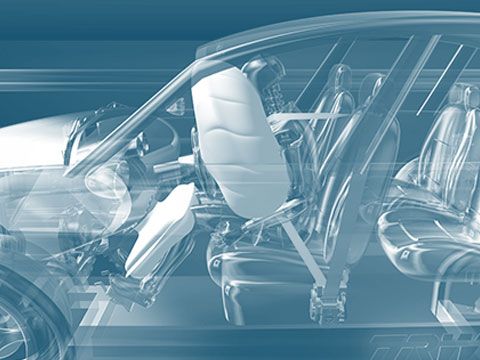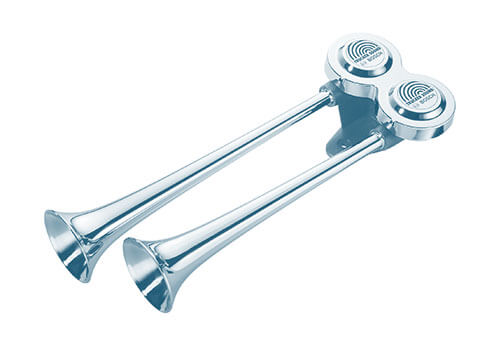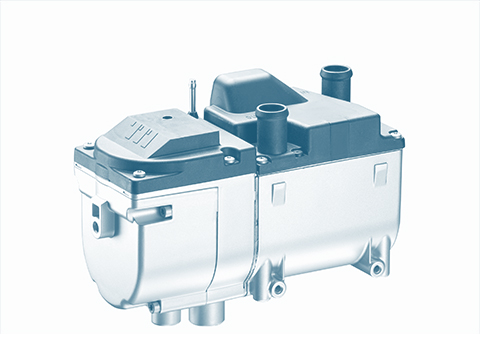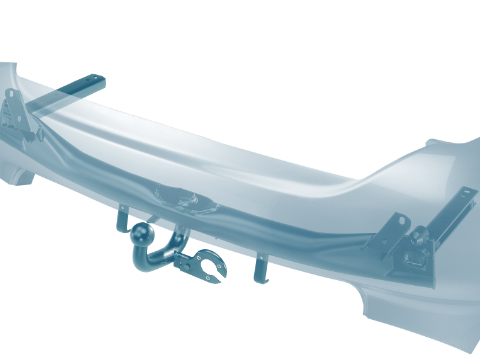Central locking system
The locking system in a vehicle must grant access only to authorised persons. It is the means via which the vehicle doors and boot lid are locked and unlocked and the engine is started.The locking system is...
Environmental protection
In the event of an accident, fuel filler caps with locks, which are also available for retrofitting, improve both safety and the protection of the environment by preventing fuel from escaping. Moreover, the valve systems installed in modern fuel filler caps reduce fuel evaporation. In the field of commercial vehicles too, locking systems make an active contribution to the protection of the environment, as they provide an assurance of safety for urea tanks. Urea is used to meet the strict environmental standards of Euro IV and V and to reduce the toxic emissions of diesel vehicles.
Safety
Modern locking systems help to increase both security and safety in vehicles. Where security is concerned, they provide protection against theft and, in conjunction with an alarm system, act as a deterrent. In terms of safety, the integrated control of lighting elements when doors are unlocked, for example, contributes to safety on the road by improving the visibility of open doors.
Function
The locking system in a vehicle must grant access only to authorised persons. It is the means via which the vehicle doors and boot lid are locked and unlocked and the engine is started.The locking system is operated with a key or remote control.
Different mechanical locking systems
In years gone by, purely mechanical locking systems were the norm. Each door or lid had an independent mechanism which could be operated from the outside with a key or from the inside with a knob. Central locking systems, for which pneumatic drives were used originally, brought about significant improvements in comfort and convenience. These systems feature a built-in vacuum reservoir which triggers the locks on all doors when the key is turned in a lock. Electric locking systems are commonplace in today's vehicles. Most of these combine a key with infrared or wireless remote control. This means that they can be triggered remotely, i.e. without contact between key and vehicle. Today, most vehicle manufacturers only fit a lock which can be operated with a key in one door, so the car can be unlocked in an emergency. The very latest systems enable entirely keyless vehicle access. Drivers only need to have the transmitter in their pockets, for example. The doors are then unlocked when the driver touches a door handle which has a built-in contact point.
Components of central locking systems
The locking system comprises the following components: Door handle/Handle strip The door handle is the traditional means by which a vehicle is opened and closed from inside or outside. The external door strip usually houses the door lock. Door strips are increasingly used as design elements in modern cars. They can be chrome-plated or paint-finished in the same colour as the vehicle. Door lock/Actuator The latching mechanism in a vehicle is installed directly in its doors. It contains both a latch and an electric motor (actuator) which controls the central locking. The latch opens or closes the doors, whereas the door lock locks or unlocks the vehicle. Today, all door latches are powered by electric drives. Fuel filler cap The fuel filler cap must securely seal the fuel tank. Some fuel filler caps have locks, others do not. Fuel filler caps with locks are usually found on vehicles which have either a fuel filler flap which does not lock or no fuel filler flap at all. Fuel filler caps without locks are found on vehicles whose fuel filler flap is locked automatically via the central locking system. Transponder The transponder is usually integrated inside the key bow. It is the means by which the electronic immobiliser identifies that the correct key is being used. The transponder's code is read out as the key nears the ignition lock. If the code is correct, the electronic immobiliser sends the start enable to the engine. Remote control Remote controls are being used with increasing frequency in small cars, replacing the functions of a conventional key to all intents and purposes. A signal transmitter sends a signal or a coded order instruction to a receiver inside the vehicle, which usually controls a number of functions. Infrared remote controls have a range of up to 15 m. They rely on direct "visual" contact between transmitter and receiver. Today, infrared remote controls are only used rarely as they have been overtaken by other technologies. Wireless remote controls transmit on radio frequencies and have a range of up to approximately 100 m. Keys The basic function of keys and remote controls is the locking and unlocking of doors, luggage compartments, fuel filler caps, etc. they are also used to control the
- interior lighting
- electronic immobiliser
- alarm system and the
- window lifters.







